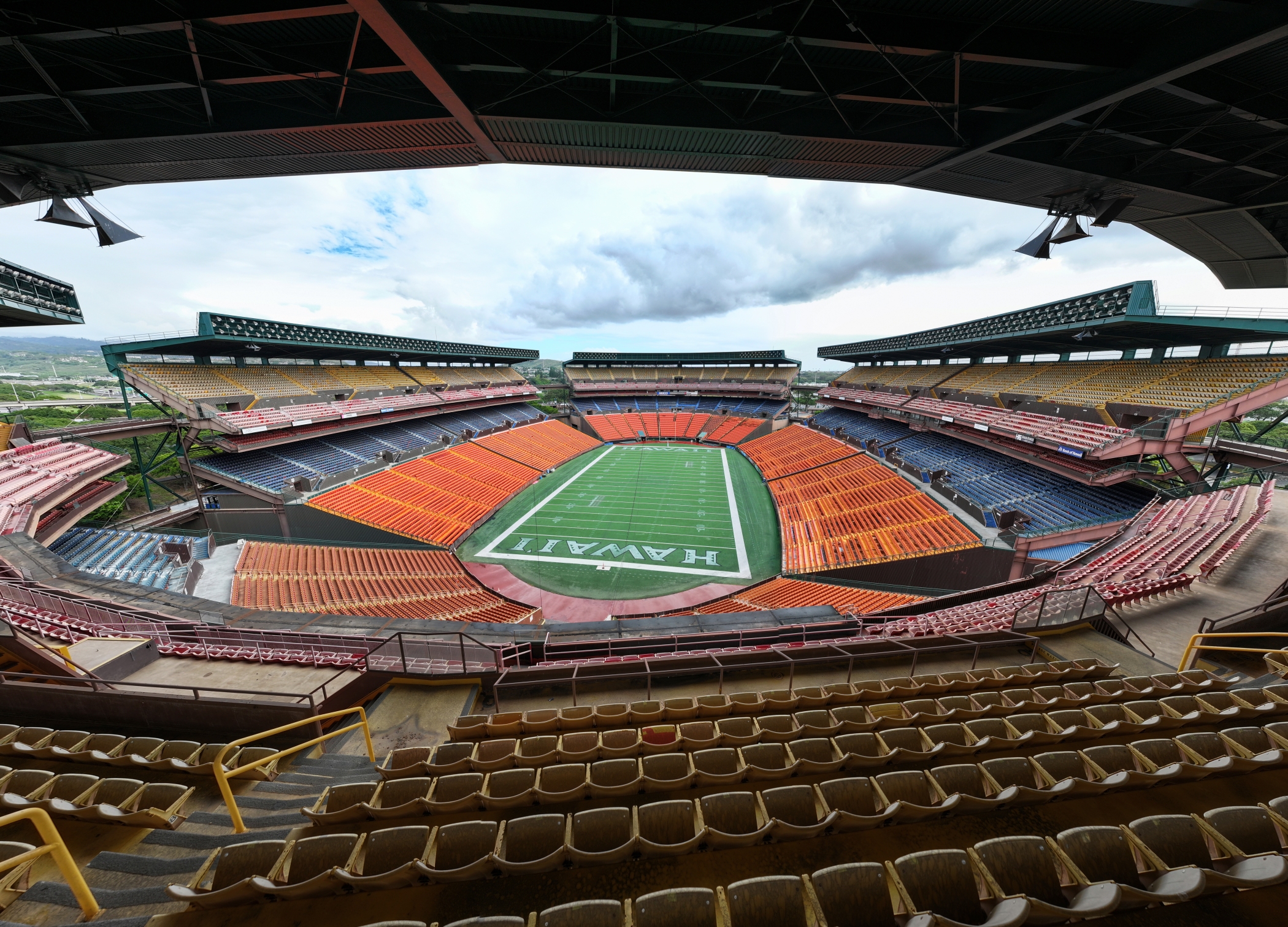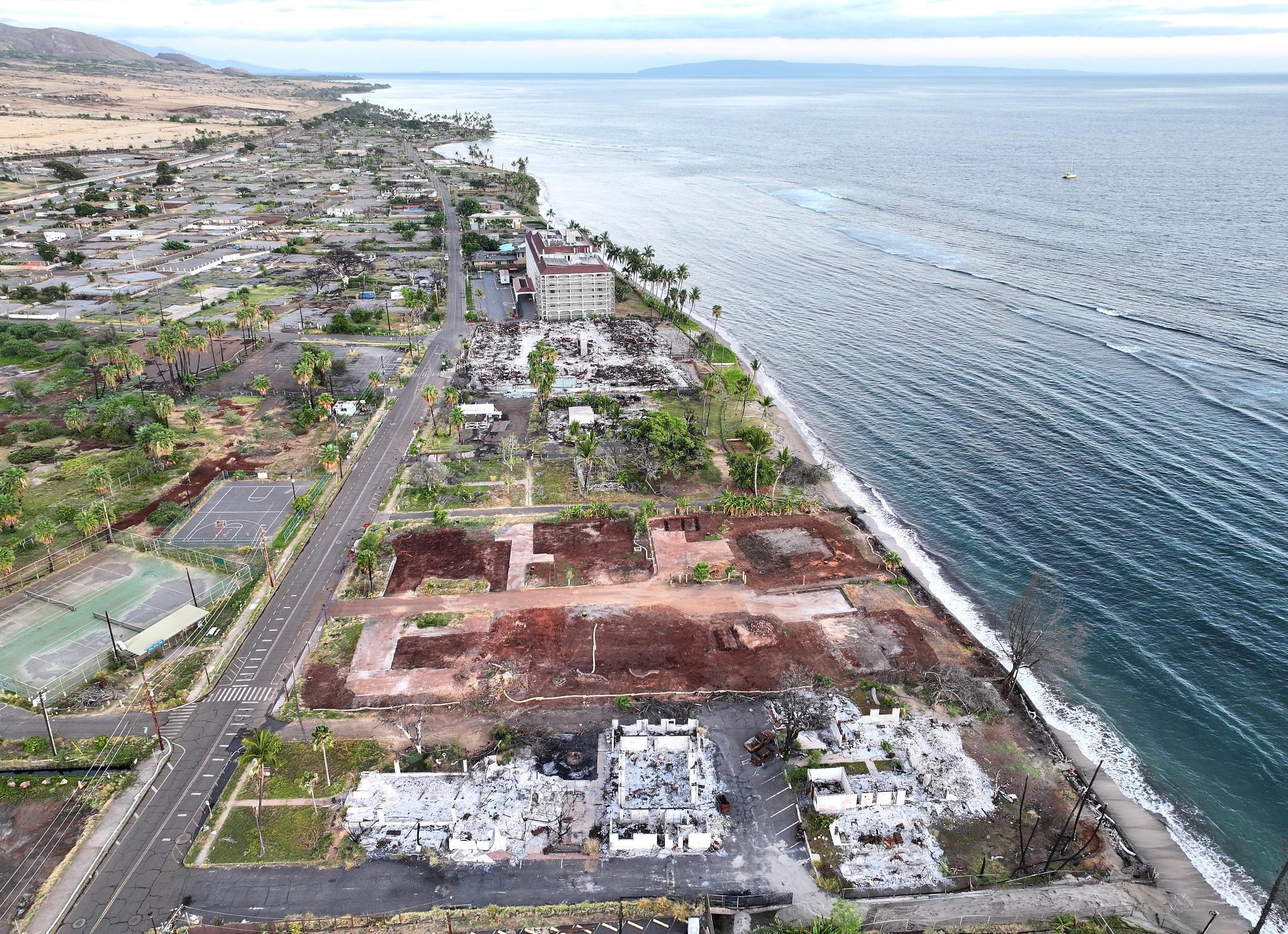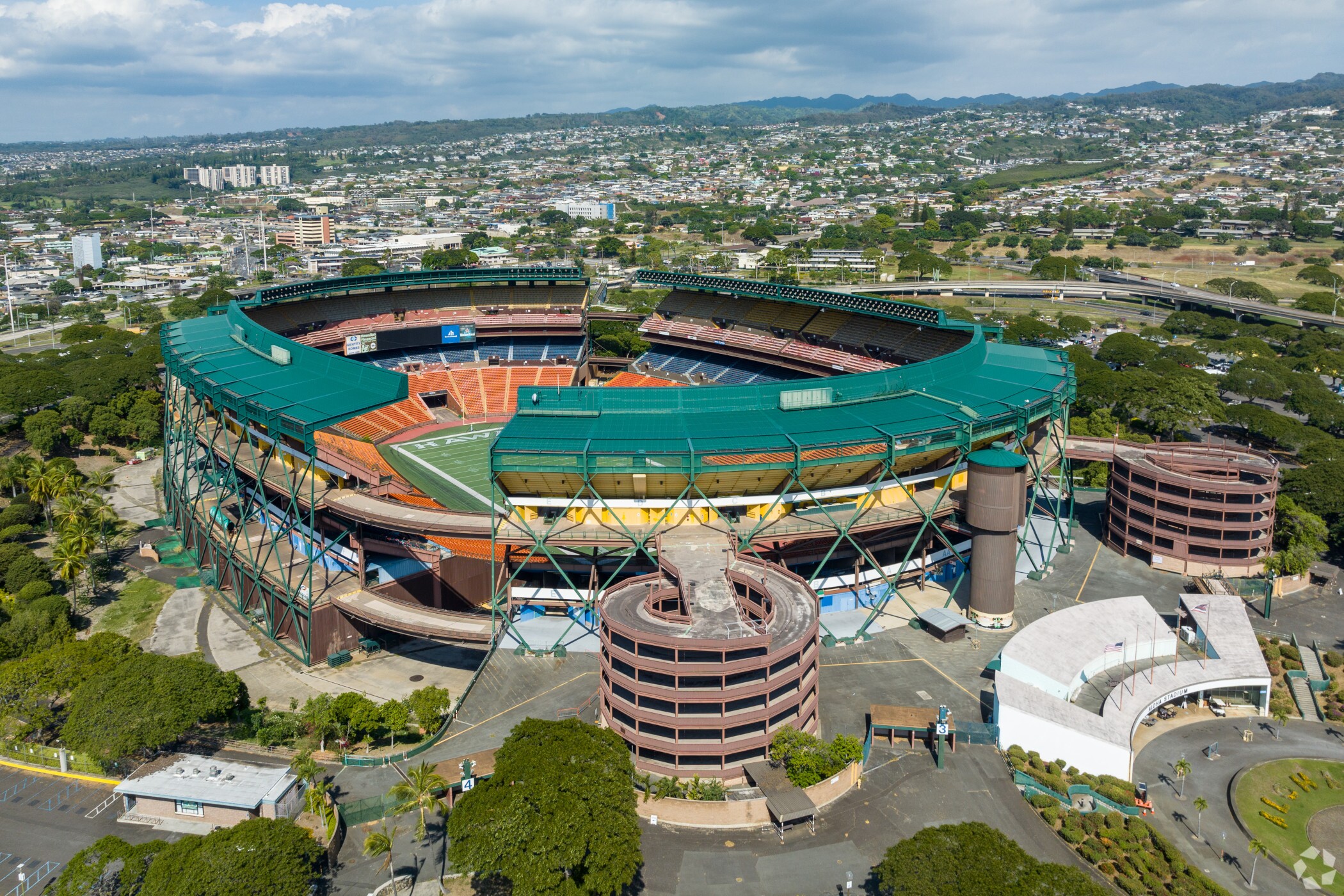After years of false starts, the state of Hawaii is nearing the approval of a new sports stadium and surrounding entertainment and retail district in Honolulu, joining a growing a list of U.S. and Canadian cities to pair athletic facilities with commercial development.
The New Aloha Stadium Entertainment District and a group led by Stanford Carr Development expect to finalize next month a public-private partnership to develop a stadium and commercial district, according to the state. The University of Hawaii football team will be the primary tenant, and the stadium is expected to also host soccer games, concerts and other events. The project cost is estimated at about $650 million, according to Honolulu Civil Beat.
Honolulu is looking to follow the lead of Ballpark Village in St. Louis, Texas Live! in Dallas-Fort Worth and the Battery in Atlanta, where stadiums are located amidst office towers, apartments, restaurants, hotels and entertainment venues. The developments can be a significant generator of economic revenue, according to JLL.
“Thoughtfully designed venues play a crucial role in fostering community engagement and contributing to a city’s overall success,” Robert Koshgarian, vice president of sports and entertainment at JLL, said in a February news release.

Honolulu and the state of Hawaii, however, have struggled to get their project off the ground and it’s still possible the new stadium and district may never get built. The saga started in 2020 when Aloha Stadium was closed to the public because of structural issues.
Disagreements over funding and the size and scope of the project have led to repeated delays. The Hawaii Legislature this year denied a request for about $50 million in state funds, according to local media reports.
Other organizations, such as the Honolulu-based think tank Grassroot Institute of Hawaii, have blamed the Jones Act for the higher costs of goods in Hawaii that in turn raises stadium construction costs.
The Jones Act was approved in 1920 to protect the American maritime industry. It restricts the transport of goods to Hawaii, Alaska and U.S. territories to ships built in America, that fly the U.S. flag and that are owned by American citizens, driving up prices due to the lack of competition, according to the Grassroot Institute.

City and state leaders and the University of Hawaii also disagreed whether to renovate the abandoned Aloha Stadium or demolish and build a new facility. They eventually embraced the latter plan and demolition of Aloha Stadium, which has major structural issues, is scheduled for later this year. Plans call for the new stadium to open in time for the 2028 college football season.
“We know the community is as eager as we are to see this much-anticipated project underway,” Stanford Carr, president of his namesake, Honolulu-based firm, said in a June 24 news release.
Hawaii has other issues that elected officials and community groups may find more pressing. For one, the state needs to identify funding for recovery efforts on Maui from the 2023 wildfires. Local community groups on Maui have expressed concern that federal and state recovery funds may eventually run out, according to Hawaii Public Radio.
The state’s infrastructure also needs major financial commitments, such as renovating Honolulu’s Daniel K. Inouye International Airport, modernizing Oahu’s wastewater treatment facilities and various highway projects.

But the stadium project has plenty of local supporters and some private developers have recently completed projects near the 98-acre stadium and commercial district site or have projects in the works.
Hunt Development Group and Pacific Development Group this month opened a 19-story multifamily tower called Naula Apartments, a project that will include affordable units. The Hawaii Public Housing Authority has proposed redeveloping Puuwai Momi, an affordable housing community that opened in 1969.
The multifamily housing properties, the stadium and the mixed-use district will all be accessible to the Halawa Aloha Stadium station on Honolulu’s new rapid-transit line, Skyline. The train will eventually connect to downtown Honolulu and the international airport.
Since the existing Aloha Stadium is closed, the Hawaii Rainbow Warriors are playing home football games at the 15,000-seat Ching Athletics Complex. However, the team’s upcoming move in 2026 to the Mountain West Conference requires the team to play in a larger stadium. The new stadium is projected to have the capacity for 25,000 to 35,000 seats.
“I do know absolutely to be a successful Division 1 [college football] program, we need a permanent stadium for sure,” Matt Elliott, the University of Hawaii athletic director, told Hawaii News Now on June 30.
“That has to happen,” Elliott said.
For the record
DEVEN Group, Ameresco and Cordish Cos. are other members of the Stanford Carr-led development group. RMA Architects, Populous, SB Architects, Henning Larsen, Alakea Design Group and WCIT Architects are design architects. Crawford Architects and AHL created a provisional master plan. Hawaiian Dredging Construction and AECOM Hunt are general contractors. O'Melveny & Myers is legal counsel to the state of Hawaii's Stadium Authority.
